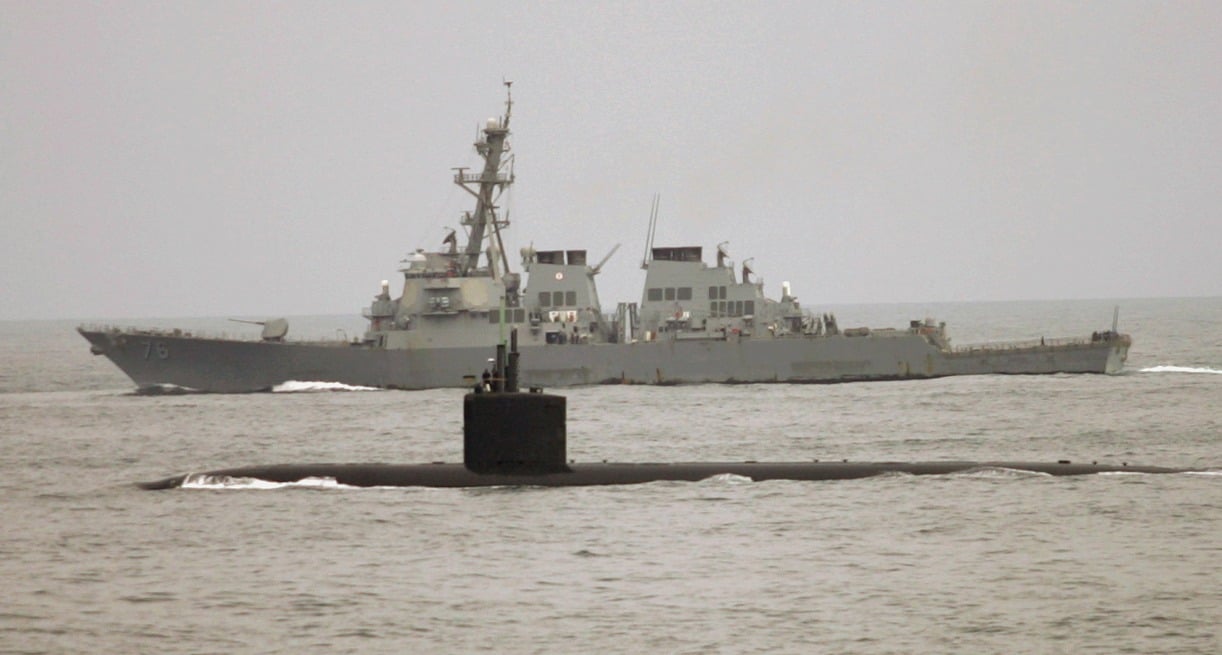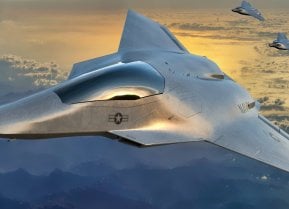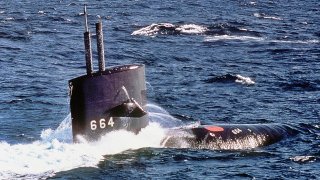Sturgeon-Class: The Navy Nuclear Submarine Russia Feared for a Reason
The Sturgeon-class submarines served as the backbone of the U.S. Navy's Cold War-era submarine fleet before being succeeded by the Los Angeles-class.
What You Need to Know: The Sturgeon-class submarines served as the backbone of the U.S. Navy's Cold War-era submarine fleet before being succeeded by the Los Angeles-class.

-Designed for hunting enemy submarines, the Sturgeon-class boats were an enlarged, stealthier version of the Thresher/Permit-class and featured advanced sonar, torpedo control systems, and the ability to launch Sub-Harpoon and Tomahawk missiles.
-Thirty-seven Sturgeon-class submarines were built between 1963 and 1975. With extended service lives, the final Sturgeon-class submarine, USS Parche (SSN-683), was decommissioned in 2005.
Sturgeon-Class: The U.S. Navy’s Cold War Submarine Powerhouse
Until the introduction of the Los Angeles-class, the Sturgeon-class was the backbone of the United States Navy's Cold War-era submarine fleet.
The boats were dedicated to seeking out and destroying enemy submarines.
What to Know:
Both the United States and the Soviet Union had begun developing hunter-killer submarines in the late 1940s, but their paths certainly diverged.
The United States Navy concentrated on submarines that were armed with weapons launched by torpedo tubes and those designated as SSNs, whereas the Soviets developed subs that were capable of launching both torpedoes and anti-ship missiles. Such vessels were designated SSGNs.
The American SSNs were designed to hunt their quarry by listening with sensitive sonar devices mounted on the hull. Apart from the high-tech sensory systems, the main advantage of the U.S. Navy's hunter-killer submarines was that they could remain submerged on patrol for virtually unlimited periods.
The diving depth of a hunter-killer could match, and even often exceed, that of a ballistic missile submarine.
Meet the Sturgeon-Class
The Sturgeon-class was an enlarged and improved version of the Thresher/Permit-classes that directly preceded it, but with additional "stealth" features and electronic systems.
These were the largest class of nuclear-powered submarines until the advent of the Los Angeles-class, and were frequently used in intelligence gathering, which involved carrying special equipment and National Security Agency (NSA) personnel.
USS Sturgeon (SSN-637) began her operation patrols in 1968, and during one series of exercises, she played a partial role in the evaluation of new equipment mounted in the U.S. Navy's maritime patrol aircraft.
Her longest deployment took place in 1974 when she was detached to the U.S. Sixth Fleet in the Mediterranean for a six-month period.
Key Specifications
The Sturgeon-class was equipped with a Westinghouse S5W pressurized-water reactor, which powered two steam turbines that drove a single shaft. That enabled a speed of 18 knots on the surface and 26 knots surfaced.
The original electronics suite consisted of a BPS-15 surface-search radar, a BQQ-sonar suite and later a towed array, as well as a Mk 117 torpedo fire control system, a satellite communications system and an underwater telephone.
The hunter/killer attack submarines were originally armed with 533mm (21-inch) torpedoes that were later upgraded to include Sub-Harpoon and Tomahawk submarine-launched ballistic missiles. Data on each torpedo tube could be displayed on a control panel in the boat's control center, and relayed to the sub's combat system.
The control center also included a Target Motion Attack (TMA) system, which allowed the crew to track targets using only passive sonar bearings.
The crew complement was 14 officers and 95 men. Some of the boats of her class were modified with compartments for U.S. Special Forces, notably Navy SEALs, as well as the associated equipment.
A total of thirty-seven of the boats – as well as one modified version for experimental research – were produced. Construction on the lead boat began in 1963, and multiple shipbuilders including General Dynamics Electric Boat, Ingalls Shipbuilding, Portsmouth Naval Shipyard, New York Shipbuilding, Newport News Shipbuilding, and Mare Island Naval Shipyard produced the submarines until 1975.
The final boat of the class, USS Richard B. Russell (SSN-687), was commissioned in August 1975. Originally designed for twenty-year operational lives, boats of the Sturgeon-class had this lengthened to thirty years, with a further planned three-year extension.
The first to be decommissioned, in October 1991, was USS Sea Devil (SSN-664); the last, USS Parche (SSN-683), was decommissioned in July 2005.
About the Author: Peter Suciu
Peter Suciu is a Michigan-based writer who has contributed to more than four dozen magazines, newspapers and websites. He regularly writes about military hardware, and is the author of several books on military headgear including A Gallery of Military Headdress, which is available on Amazon.com. Peter is also a Contributing Writer for Forbes.
All images are Creative Commons.


